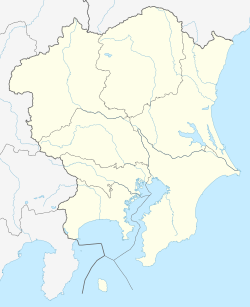Kamakura
鎌倉市 | |
|---|---|
From top, left to right: Tsurugaoka Hachimangū, Daibutsu (giant Buddha) at Kōtoku-in, Kenchō-ji, Kamakura-gū (Ōtōnomiya), and Egara Tenjin Shrine | |
 | |
 Kamakura in Kanagawa Prefecture | |
| Coordinates: 35°19′11″N 139°33′09″E / 35.31972°N 139.55250°E | |
| Country | |
| Region | Kantō |
| Prefecture | Kanagawa Prefecture |
| First official recorded | 1063[citation needed] |
| City Settled | November 3, 1939 |
| Government | |
| • Mayor | Matsuo Takashi |
| Area | |
| • Total | 39.67 km2 (15.32 sq mi) |
| Population (September 1, 2020) | |
| • Total | 172,929 |
| • Density | 4,400/km2 (11,000/sq mi) |
| Time zone | UTC+9 (Japan Standard Time) |
| – Tree | Yamazakura (Prunus jamasakura) |
| – Flower | Gentian |
| Phone number | 0467-23-3000 |
| Address | 18-10 Onarimachi, Kamakura-shi, Kanagawa-ken 248-8686 |
| Website | Official website |
Kamakura (鎌倉, Kamakura, [kamakɯɾa] ), officially Kamakura City (鎌倉市, Kamakura-shi), is a city of Kanagawa Prefecture in Japan. It is located in the Kanto region on the island of Honshu. The city has an estimated population of 172,929 (1 September 2020) and a population density of 4,359 people per km2 over the total area of 39.67 km2 (15.32 sq mi). Kamakura was designated as a city on 3 November 1939.
Kamakura is one of Japan's ancient capitals, alongside Kyoto and Nara, and it served as the seat of the Kamakura shogunate from 1185 to 1333, established by Minamoto no Yoritomo. It was the first military government in Japan's history. After the downfall of the shogunate, Kamakura saw a temporary decline. However, during the Edo period, it regained popularity as a tourist destination among the townspeople of Edo. Despite suffering significant losses of historical and cultural assets due to the Great Kantō Earthquake in 1923, Kamakura continues to be one of the major tourist attractions in the Kanto region, known for its historical landmarks such as Tsurugaoka Hachimangū and the Great Buddha of Kamakura.









